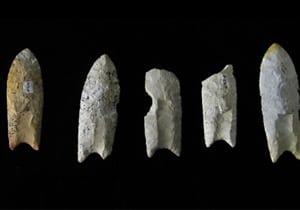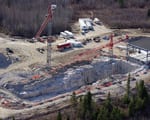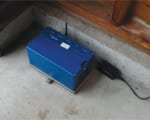Science, the widely read news outlet of the American Association for the Advancement of Science, covered the research of SMU archaeologist David J. Meltzer with the article “What Caused a 1300-Year Deep Freeze?”
A member of the National Academy of Sciences, Meltzer researches the origins, antiquity, and adaptations of the first Americans who colonized the North American continent at the end of the Ice Age. He focuses on how these hunter-gatherers met the challenges of moving across and adapting to the vast, ecologically diverse landscape of Late Glacial North America during a time of significant climate change.
The Science piece by Michael Balter highlights Meltzer’s latest study to show that a comet, or any other kind of extraterrestrial impact, was not responsible for sudden climate change at the end of the Ice Age 12,800 years ago. Proponents of the comet-impact theory have pointed to sedimentary deposits that they say prove that an object from outer space hit the Earth, extinguishing the Clovis culture and causing the mass extinction of many animals.
EXCERPT:
By Michael Balter
Science
Things were looking up for Earth about 12,800 years ago. The last Ice Age was coming to an end, mammoths and other large mammals romped around North America, and humans were beginning to settle down and cultivate wild plants. Then, suddenly, the planet plunged into a deep freeze, returning to near-glacial temperatures for more than a millennium before getting warm again. The mammoths disappeared at about the same time, as did a major Native American culture that thrived on hunting them. A persistent band of researchers has blamed this apparent disaster on the impact of a comet or asteroid, but a new study concludes that the real explanation for the chill, at least, may lie strictly with Earth-bound events.The study “pulls the rug out from under the contrived impact hypothesis quite nicely,” says Christian Koeberl, a geochemist at the University of Vienna. Most evidence for the extraterrestrial impact hypothesis, he says, was conjured up “out of thin air.”
The 1300-year big chill is known as the Younger Dryas, so-called because of the sudden worldwide appearance of the cold-weather flowering plant Dryas octopetala. A number of causes have been suggested, including changes in ocean currents due to melting glaciers and volcanic activity. In 2007, a diverse group of 26 researchers, led by nuclear chemist Richard Firestone of the Lawrence Berkeley National Laboratory in California, formally proposed what is known as the Younger Dryas impact hypothesis, in which one or more extraterrestrial bodies blew up over North America, leading to widespread wildfires and strewing sun-blocking dust and debris across the globe.
In a series of papers, Firestone and his colleagues claimed various kinds of evidence for the hypothesis, including deposits of the element iridium (rare on Earth but abundant in meteorites), microscopic diamonds (called nanodiamonds), and magnetic particles in deposits at sites supposedly dated to about 12,800 years ago. The notion was popularized in television documentaries and other coverage on the National Geographic Channel, History Channel, and the PBS program NOVA. These claims were sharply contested by some specialists in the relevant fields, however, who either did not detect such evidence or argued that the deposits had other causes than a cosmic impact. For example, some say that nanodiamonds are common in ordinary geological formations, and that magnetic particles could come from ordinary fires.
Now comes what some researchers consider the strongest attack yet on the Younger Dryas impact hypothesis. In a paper published online this week in the Proceedings of the National Academy of Sciences, a team led by David Meltzer, an archaeologist at Southern Methodist University, Dallas, in Texas, looks at the dating of 29 different sites in the Americas, Europe, and the Middle East in which impact advocates have reported evidence for a cosmic collision. They include sites in which sophisticated stone projectiles called Clovis points, used by some of the earliest Americans to hunt mammals beginning about 13,000 years ago, have been found, such as Chobot in Alberta, Canada, Murray Springs in Arizona, and Paw Paw Cove in Maryland; the site of Abu Hureyra in Syria, where evidence of plant-cultivating hunter-gatherers occurs; and sites in Greenland, Germany, Belgium, and the Netherlands where other evidence for an impact has been claimed. The team argues that when the quality and accuracy of the dating—which was based on radiocarbon and other techniques—is examined closely, only three of the 29 sites actually fall within the time frame of the Younger Dryas onset, about 12,800 years ago; the rest were probably either earlier or later by hundreds (and in one case, thousands) of years.
Follow SMUResearch.com on Twitter.
For more information, www.smuresearch.com.
SMU is a nationally ranked private university in Dallas founded 100 years ago. Today, SMU enrolls nearly 11,000 students who benefit from the academic opportunities and international reach of seven degree-granting schools. For more information see www.smu.edu.
SMU has an uplink facility located on campus for live TV, radio, or online interviews. To speak with an SMU expert or book an SMU guest in the studio, call SMU News & Communications at 214-768-7650.



 Real-time audio of corporal punishment shows kids misbehave within 10 minutes of spanking
Real-time audio of corporal punishment shows kids misbehave within 10 minutes of spanking Conventional vs. modern: Repertoire drives opera house identity, market share
Conventional vs. modern: Repertoire drives opera house identity, market share Women have made strides for equality in society, but gender gap still exists in art museum directorships
Women have made strides for equality in society, but gender gap still exists in art museum directorships Search for dark matter covers new ground with CDMS experiment in Minnesota
Search for dark matter covers new ground with CDMS experiment in Minnesota NOvA experiment glimpses neutrinos, one of nature’s most abundant, and elusive particles
NOvA experiment glimpses neutrinos, one of nature’s most abundant, and elusive particles SMU scientists to deploy seismic monitors in North Texas region near Azle, Texas
SMU scientists to deploy seismic monitors in North Texas region near Azle, Texas Parents less likely to spank after reading briefly about its links to problems in children
Parents less likely to spank after reading briefly about its links to problems in children Wall Street’s short sellers wrongly maligned — detected red flags ahead of US financial crisis
Wall Street’s short sellers wrongly maligned — detected red flags ahead of US financial crisis